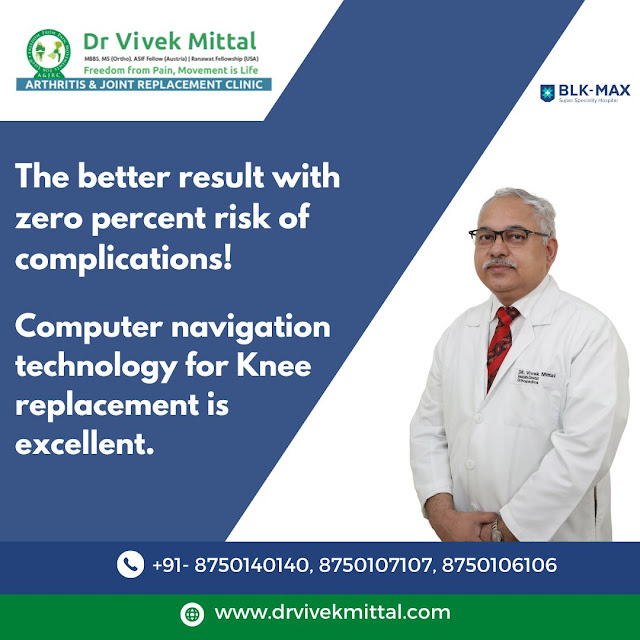Understanding Hip Replacement Surgery: A Comprehensive Guide by Dr. Vivek Mittal!
Hip replacement surgery is a common and effective surgery done to provide relief of pain and return joint function to people who have been diagnosed with hip joint damage. An experienced, Hip Replacement Surgeon in Delhi Dr. Vivek Mittal is dedicated to provide guidance to his Patients through each step of this process, so that they get a crystal clear view about what to expect.
We are discussing here the running of Hip Replacement
Surgery.
Hip replacement surgery replaces the damaged or worn
surfaces of the hip joint with artificial parts. Patients with severe
arthritis, avascular necrosis, fractures, or other conditions that interfere
with hip function generally are advised to follow this procedure.
There are different types of Hip Replacement surgery.
There are primarily two types of hip replacement
surgeries:
1. Total Hip Replacement (THR): In this procedure
both the ball (femoral head) and the socket (acetabulum) are replaced with
prosthetic components. THR is mostly done when arthritis or injury has done so
much damage that reduces the use of the joint.
2. Partial Hip Replacement: In doing so, only the
femoral head is replaced and the femoral‐acetabulum is left intact. This is
most often an option for patients who have recently had a certain type of
fracture or localized joint injury.
The Surgical Procedure
Hip replacement surgery is normally done under either
general anesthesia or spinal anesthesia. The surgeon cuts into the hip joint
(an incision), cuts away the damaged bone and cartilage, and places the
prosthetic components. In fact, the procedure usually takes from 1 to 2 hours.
In recent years, we have witnessed more practitioners
performing minimally invasive procedures through smaller incisions, and
sometimes even as effectively. This method reduces muscle damage and decreases
post surgery pain that can help to improve the overall recovery experience.
Recovery and Rehabilitation
Patients are usually sent for 1 to 3 days post-surgery in the hospital, depending on their condition and the kind of surgery performed.
Recovery process is closely associated with physical
therapy. However, they advise patients to begin moving as soon as possible
after surgery in order to improve flexibility and strength. The functional
goals for a patient, whether it’s returning to daily activities, sports, or
work; a rehabilitation program will help meet those goals.
During the initial weeks post-surgery, patients should
follow specific guidelines to aid recovery, including:
• Avoiding high-impact activities: The surgeon should
advise against high impact sports, but suggested low impact activities, such as
swimming or walking.
• Medication management: Medications to help
alleviate discomfort will be prescribed during the recovery period.
• Follow-up appointments: However, it is important to
keep up regular check-ups with the surgeon to make sure everything has healed
properly and to deal with any issues.
Conclusion
A hip replacement surgery can dramatically enhance quality
of life for people unable to move due to debilitating hip pain. I’m a Hip Replacement Surgeon in Delhi who will dedicate all my effort to helping each
patient on a case-by-case basis making important, but simple observations that
you wouldn’t think about otherwise. If you suffer continuous hip pain and you
unsure if surgery is right for you, I encourage you to schedule a consultation
to review a plan for you to follow. We’ll work together to discuss your
condition, explain treatment options, and create a plan that will help you get
back to a more active, pain free life.
If you are interested in hip replacement surgery then you
can already check out Dr. Vivek Mittal’s website or you can contact him for
yourself to get more information about hip replacement surgery.
.jpg)



Comments
Post a Comment